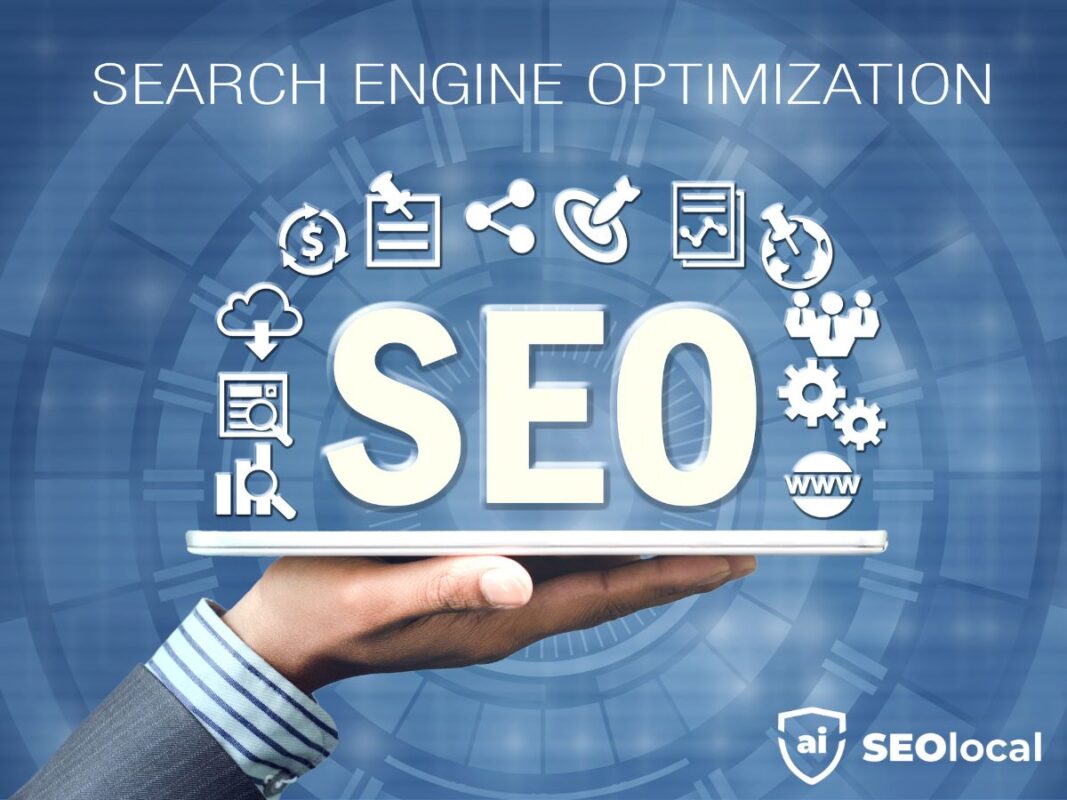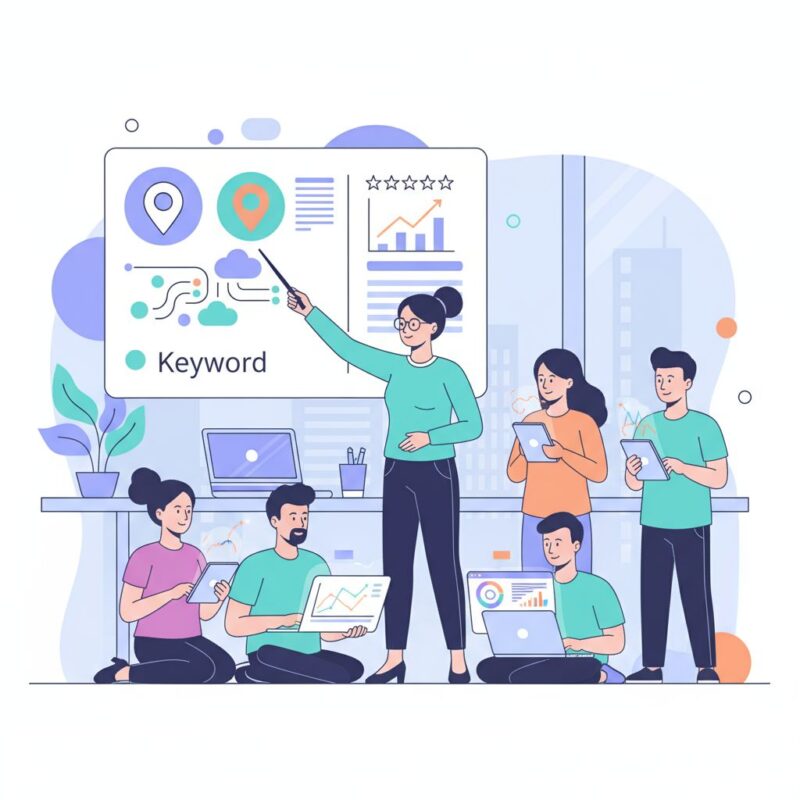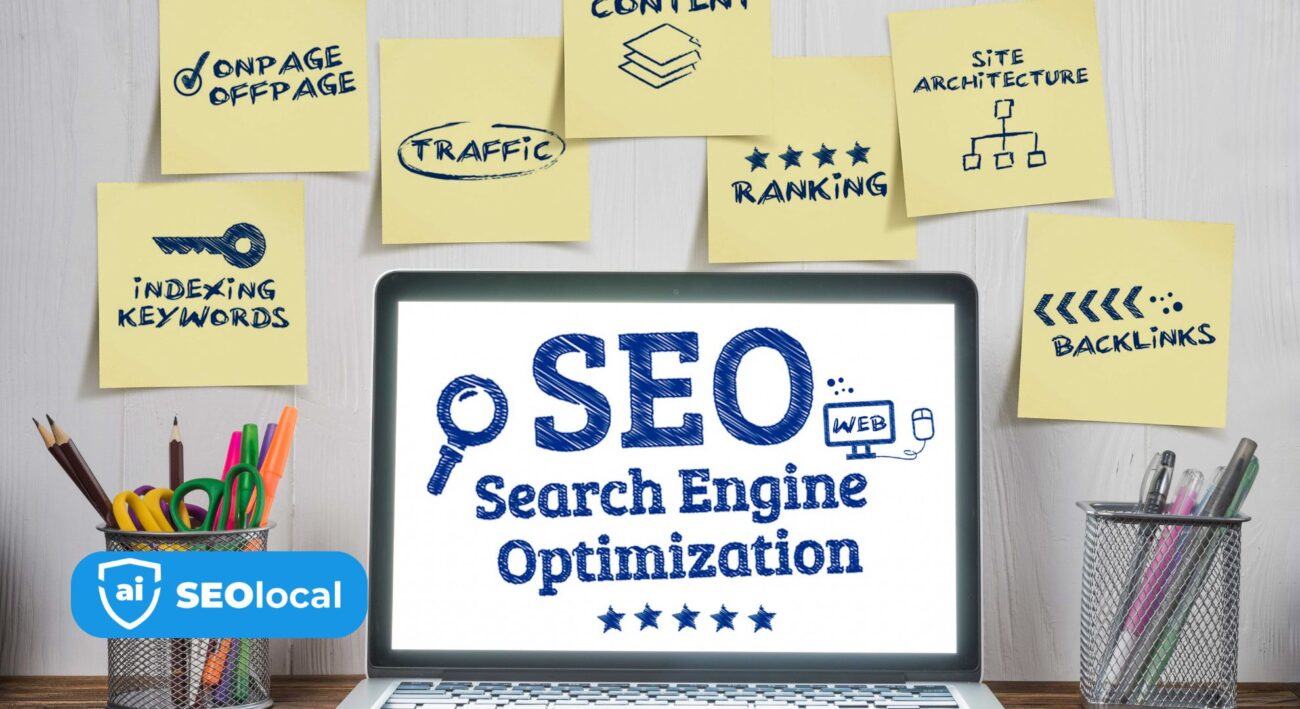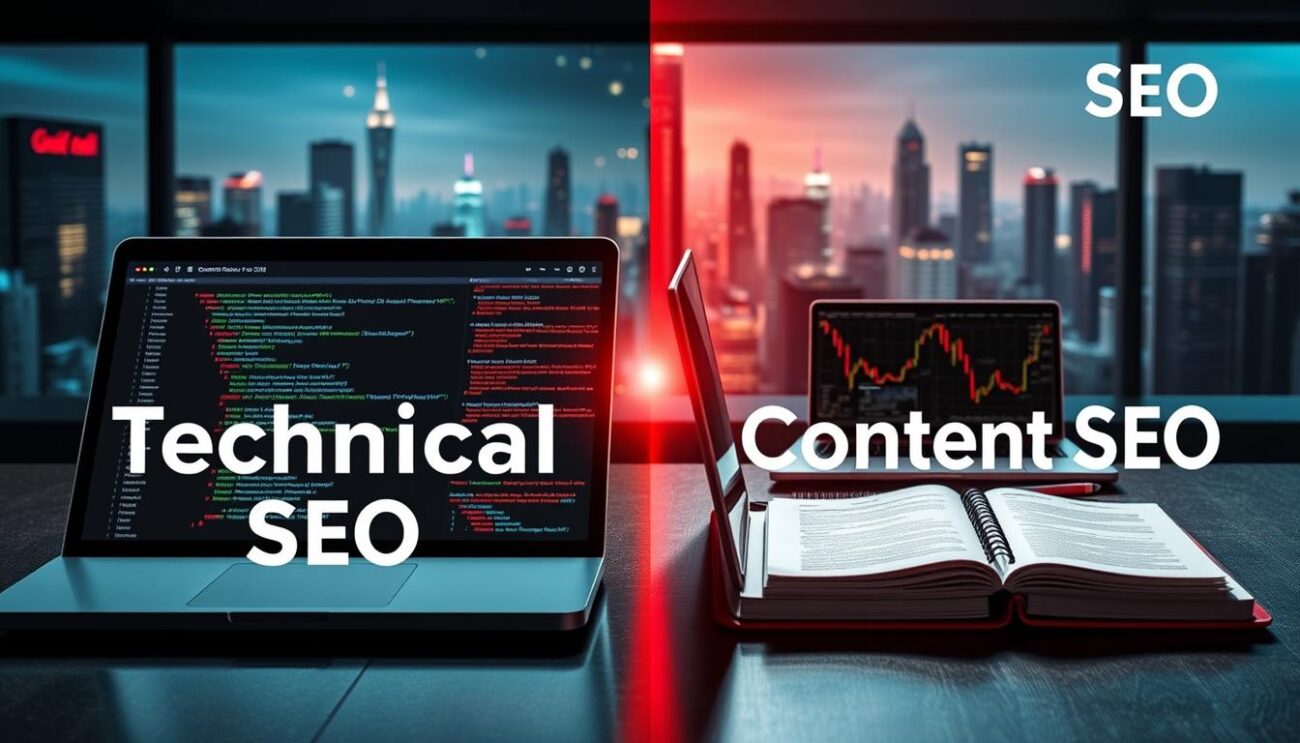- Advanced Local SEO Strategies
- Fundamentals of Local SEO
- Google Business Profile (GBP) Optimization
- Local Keywords and Content Strategy
- Local Link Building
- Local Paid Advertising
- Local Search Ranking Factors
- Local SEO Best Practices
- Local SEO Tools and Analytics
- Local Social Media Marketing
- Online Reviews and Reputation Management
- Technical SEO for Local Businesses
Mastering On-page SEO in 2025: Key Ranking Factors

Did you know 70% of top-ranking web pages now rely on invisible technical tweaks as much as visible content? The digital landscape has shifted dramatically, with search engines prioritizing seamless user experiences over isolated keyword tricks. What worked five years ago won’t cut it today—and tomorrow’s standards demand even smarter strategies.
Modern optimization blends three critical elements: content that answers real questions, technical setups that load faster than a blink, and design that keeps visitors glued to the screen. It’s no longer about stuffing phrases or chasing backlinks. Algorithms now analyze how real people interact with your site—scroll depth, mobile responsiveness, even how quickly buttons respond to taps.
The best-performing pages treat these elements as interconnected gears in a machine. When one part falters, the whole system sputters. Your meta tags might attract clicks, but slow load times will send users bouncing. Brilliant content loses its shine if navigation feels like a maze. Success lies in balancing what visitors see and what happens behind the curtain.
Key Takeaways
- Technical performance now impacts visibility as much as traditional content strategies
- User engagement metrics directly influence search result positions
- Mobile-first design isn’t optional—it’s the baseline for competitiveness
- Algorithms reward pages that solve problems holistically
- Ongoing optimization beats one-time fixes in maintaining rankings
Introduction to On-Page SEO in 2025
Controlling your site’s visibility starts with mastering elements directly under your command. Modern website optimization blends editable components like text, code, and design—all working together to satisfy both visitors and algorithms. Unlike external strategies, these adjustments happen entirely within your domain, giving you precision over how search engines interpret and value your pages.
What You Control Matters
Every tweak you make—from header tags to image compression—shapes how crawlers assess your pages. Think beyond keywords: structured data markup tells machines exactly what your content means, while mobile responsiveness determines whether users stay engaged. Even page speed now acts as a gatekeeper, filtering out sites that can’t keep up with today’s impatient searchers.
The New Rules of Visibility
Algorithms in 2025 judge pages by how well they solve problems, not just match phrases. Machine learning models analyze user behavior patterns, rewarding sites that keep visitors scrolling and clicking. Core Web Vitals serve as a report card for technical health, while E-A-T guidelines ensure your content demonstrates real expertise. Voice search compatibility and schema markup have shifted from optional extras to non-negotiable standards.

Understanding the Importance of On-Page SEO
In a digital age flooded with information, standing out requires material that genuinely serves readers. Google’s algorithms now filter out shallow pages—like those with recycled text or vague promises—and reward resources that demonstrate expertise. Your pages must become destinations, not just stops in a search journey.
Why Quality Content Matters
Visitors crave answers that solve specific problems. Pages offering clear, actionable steps outperform those stuffed with generic advice. For example, a guide explaining “how to fix a leaky faucet” needs precise tool lists and troubleshooting tips—not just surface-level descriptions.
Trust forms the backbone of successful material. Readers expect accurate data, verifiable sources, and transparent explanations. When your content delivers on its headline’s promise, it builds credibility with both users and search systems.
Structure plays a key role. Break complex topics into scannable sections with descriptive headers. Use bullet points for key steps and tables for comparisons. Research shows articles between 2,100-2,400 words often rank higher because they balance depth with readability.
Every sentence should add value. Remove filler phrases like “in today’s world” or redundant explanations. Focus on dense, useful information that respects your audience’s time. This approach keeps visitors engaged and signals to algorithms that your page deserves attention.
On-page SEO vs Off-Page SEO
Ever wonder why some pages climb search results while others stagnate? The answer lies in balancing two distinct approaches: adjustments you make directly to your digital assets versus efforts that build authority beyond your domain. Both strategies work together to boost visibility, but they operate through different mechanisms.
Key Differences and Overlaps
Your website’s optimization falls into three categories. Direct page edits involve improving content quality, refining headers, and optimizing loading speeds. External strategies focus on earning endorsements from other platforms through credible backlinks and social shares. Technical foundations ensure both approaches function smoothly.
| Focus Area | Control Level | Key Tactics | Impact Time |
|---|---|---|---|
| Direct Page Edits | Full Control | Content updates, meta tags, mobile design | 2-8 weeks |
| External Authority | Partial Influence | Guest posts, directory listings, PR campaigns | 3-12 months |
| Technical Foundations | Full Control | Structured data, security protocols, sitemaps | 1-4 weeks |
Direct optimizations let you fix issues immediately. You can rewrite weak paragraphs or compress oversized images today. External strategies require patience—building relationships with industry sites takes months but yields lasting credibility.
These methods overlap through technical elements. Fast-loading pages keep visitors engaged, increasing the chance they’ll share your content. Clear site architecture helps search engines find and index your material, making external links more impactful.
Foundational Principles of On-Page Optimization
Building a website that ranks well starts with three pillars working in harmony: valuable material, logical organization, and frictionless interaction. These elements form a triangle where each side supports the others—weakness in one area compromises your entire digital presence.
Your site’s blueprint determines how visitors and search tools navigate your pages. The three-click rule remains vital: users should access key information within three steps from your homepage. Clear menus and breadcrumb trails prevent dead-ends while helping crawlers map your content.
Content, Structure, and Usability
Strategic linking acts as your site’s circulatory system. Structural connections in headers and footers create main pathways, while contextual links within text guide visitors to related resources. This dual approach keeps engagement high and bounce rates low.
| Link Type | Placement | Purpose | Example |
|---|---|---|---|
| Structural | Navigation menus | Guide users to primary sections | Homepage > Services > Web Design |
| Contextual | Within article text | Deepen topic understanding | “Learn proper image compression techniques” |
Organize material using clear hierarchies. Break complex ideas into scannable sections with descriptive subheadings. Bullet points and tables help readers absorb information quickly—a crucial factor for mobile users.
Technical performance remains non-negotiable. Pages must load in under two seconds and adapt flawlessly to all devices. Accessible design elements like alt text and keyboard navigation ensure everyone can interact with your content effectively.
When these components align, your platform becomes both human-friendly and machine-readable. Visitors stay longer, share resources more often, and return for future needs—all signals that boost your visibility organically.
On-page SEO factors 2025
Digital visibility now demands precision engineering across twelve critical elements. These components work like interlocking puzzle pieces—each must fit perfectly to reveal the full picture of success.
Technical foundations separate contenders from pretenders. Your site must load faster than three seconds across all devices while maintaining mobile responsiveness. Secure connections through HTTPS encryption remain non-negotiable for both security and credibility.
- Clear navigation paths through logical site architecture
- XML sitemaps guiding search crawlers efficiently
- Strategic outbound links to trusted industry resources
- Compressed media files balancing quality with speed
Content quality determines staying power. Align every paragraph with specific user needs, using natural language that answers questions thoroughly. URLs should act as clear signposts—short, descriptive, and free of confusing parameters.
Engagement metrics now directly influence visibility. Optimize headlines and meta descriptions to boost click-through rates. Break text into scannable blocks with bullet points and subheaders. Ensure images carry descriptive alt text while enhancing visual appeal.
These twelve elements form a living system requiring regular audits. Neglect one, and you risk losing ground to competitors who master the complete set. Continuous refinement keeps your platform aligned with evolving search priorities.

Conducting Effective Keyword Research for SEO
Imagine discovering hidden pathways to your audience’s needs before they even articulate them. Modern keyword analysis acts as this compass, revealing what questions people ask and how they phrase their searches. This process forms the foundation for creating material that resonates deeply while satisfying algorithmic requirements.
Tools and Techniques to Identify Keywords
Professional tools simplify the discovery process. Platforms like Google Keyword Planner and SEMrush analyze millions of queries to highlight high-potential phrases. Focus on these three metrics when evaluating options:
| Tool | Key Features | Best For |
|---|---|---|
| Ahrefs | Competitor gap analysis, keyword difficulty scores | Uncovering untapped opportunities |
| SEMrush | Trend tracking, content gap identification | Long-term strategy building |
| AnswerThePublic | Visual question mapping | Finding conversational queries |
Combine these tools to create topic clusters. Start with broad terms like “digital marketing,” then branch into related phrases like “email campaign benchmarks” or “social media analytics tools.”
Aligning Keywords with Search Intent
Matching phrases to user goals requires understanding four intent types. Navigational searches seek specific websites, while informational queries demand explanations. Transactional phrases indicate purchase readiness, and commercial investigation compares options.
| Intent Type | Content Strategy | Example Query |
|---|---|---|
| Informational | Comprehensive guides | “How to start a blog” |
| Transactional | Product comparisons | “Best CRM software 2025” |
| Commercial | Case studies | “HubSpot vs Salesforce pricing” |
Analyze top-ranking pages for your target phrases. If results show product pages, create comparison charts rather than blog posts. Update your strategy quarterly using performance data and emerging trends.
Crafting High-Quality and User-Friendly Content
Your website’s value hinges on delivering material that both informs and engages. Visitors expect clear answers to their questions paired with effortless navigation. Let’s explore how to balance depth with accessibility while maintaining technical precision.
Ensuring Relevance and Readability
Start by aligning every paragraph with your audience’s needs. Use verified statistics and case studies to build credibility. For example, a guide about email marketing should include open-rate benchmarks from recent industry reports.
Structure your text for quick scanning. Break 1,500+ word articles into digestible sections with descriptive headers. Use bullet points for key takeaways and tables for complex comparisons. This approach helps readers find answers without sifting through fluff.
| Element | Purpose | Implementation |
|---|---|---|
| Trust Signals | Establish authority | Cite .gov/.edu sources |
| Action Steps | Drive results | Numbered how-to lists |
| Visual Aids | Enhance clarity | Infographics & screenshots |
Match your tone to the reader’s expertise. Explain technical terms when first mentioned, but avoid patronizing language. A piece targeting marketing managers might reference CTR optimization without defining basic acronyms.
Optimize page length based on topic complexity. Detailed guides require thorough explanations, while product comparisons benefit from concise formatting. Always ask: “Does this sentence help someone make a decision or take action?”
Optimizing Title Tags and Meta Descriptions
Think of your page’s title tag as a storefront window—it determines whether passersby step inside. These 50-60 character labels serve dual purposes: telling search crawlers what your content covers and convincing users to click. Get them right, and you’ll see more traffic flowing through those digital doors.
Best Practices for SERP Visibility
Front-load your primary phrase in titles for immediate recognition. Keep them under 60 characters to avoid truncation in search results. Use action verbs like “Discover” or “Master” to spark curiosity. For meta descriptions, craft 150-160 character summaries that highlight tangible benefits rather than just repeating content.
Incorporating Target Keywords
Place your main phrase naturally within the first three words of the title tag. In meta descriptions, weave keywords into sentences that answer “What’s in it for me?” Use secondary terms to support context without forcing repetitions. Monitor click-through rates monthly to refine your approach based on real user behavior.
Remember: titles and descriptions work together like a headline and subhead in advertising. One grabs attention, the other seals the deal. Test different combinations using search console data to find what resonates with your audience.
FAQ
How do title tags affect search rankings?
Title tags help search engines understand your page’s topic. Including target keywords near the front improves visibility while keeping titles under 60 characters ensures they display fully in results. Prioritize clarity and relevance for users.
What role do internal links play in optimization?
Internal links guide visitors to related content and distribute authority across your site. Use descriptive anchor text to highlight keywords and improve navigation, which boosts engagement and crawlability for search engines like Google.
Why is alt text important for images?
Alt text describes images to search engines and improves accessibility. Use concise, keyword-rich phrases to explain visuals without stuffing. This helps images rank in search results and enhances user experience for screen readers.
How does page speed influence rankings?
Faster-loading pages reduce bounce rates and satisfy user intent. Compress image file sizes, leverage browser caching, and minimize code. Tools like Google PageSpeed Insights identify issues impacting load times and mobile performance.
What’s the difference between on-page and off-page SEO?
On-page focuses on elements you control, like content and meta descriptions. Off-page involves external signals like backlinks. Both require aligning with search intent, but on-page optimization directly shapes how your site communicates value to crawlers.
How do I align keywords with search intent?
Analyze top-ranking pages for your target keywords. Tools like SEMrush or AnswerThePublic reveal user questions. Create content that matches the purpose behind searches—whether informational, navigational, or transactional—to boost relevance and traffic.
Why should I use structured data markup?
Structured data helps search engines interpret your content, increasing chances of rich snippets in results. Implement schema markup for articles, products, or events using Google’s Structured Data Markup Helper for better visibility.
How often should I update meta descriptions?
Refresh meta descriptions if they underperform in click-through rates. Keep them under 160 characters, include primary keywords naturally, and write compelling summaries that encourage users to click from search results pages.














